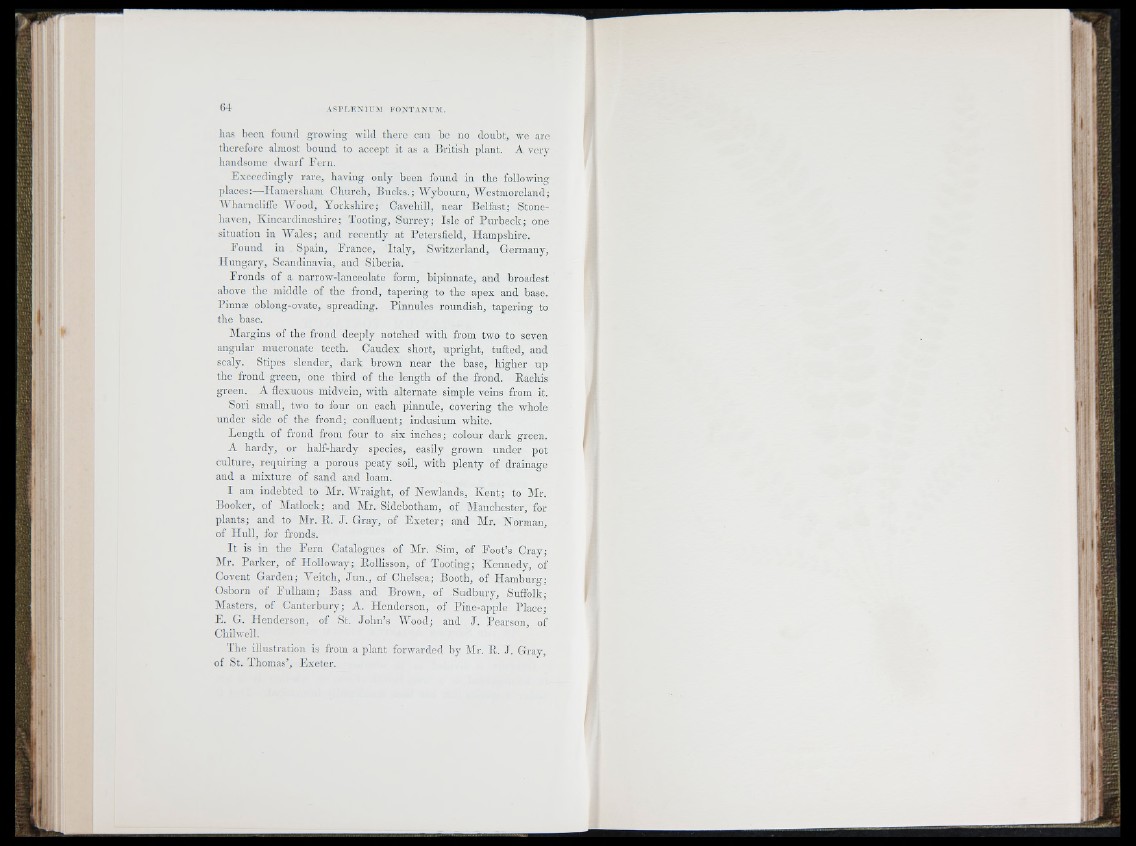
( > 4
has 1 ) 0 0 1 1 fbiind growing wild there can bo no doubt, wc are
therefore almost bound to accci)t it as a British 2 )lant. A very
handsome dwarf Bern.
Exceedingly rare, having only been found in the following
])laccs:—iLamorsliam Church, Bucks.; Wybourn, AVestmoreland;
Wharnclifle AA’ood, Yorkshire; Cavehill, near Belfast; Stonehaven,
Kmcardineshirc; Tooting, Surrey; Isle of Purbeck; one
situation in AYales; and recently at Petersfield, IIam2)shire.
Found in Sioain, France, Italy, Switzerland, Germany,
Hungary, Scandinavia, and Siberia.
Fronds of a narrow-lanccolatc form, bipinnate, and broadest
above the middle of the frond, tapering to the apex and base.
Ihnuic oblong-ovate, spreading. Pinnules roundish, tapering to
the base.
Alargins of the frond deeply notched with from two to seven
angular mucronate teeth. Caudex short, upright, tufted, and
scaly. Stipes slender, dark brown near the base, higher up
the frond green, one third of the length of the frond. Eachis
green. A flexuous midvein, with alternate simple veins from it.
Sori small, two to four on each ^oinnule, covering the whole
under side of the frond; confluent; indusium white.
Length of frond from four to six inches; colour dark green.
A hardy, or half-hardy species, easily grown under pot
culture, requiring a porous peaty soil, with plenty of drainage
and a mixture of sand and loam.
I am indebted to Air. AVraight, of Nowlands, Kent; to Air.
Booker, of Alatlock; and Air. Sidebotham, of Alanchestcr, for
plants; and to Air. R. J. Gray, of Exeter; and Air. Norman,
of EIull, for fro)ids.
It is in the Eern Catalogues of Air. Sim, of Foot’s Cray;
Air. Parker, of Holloway; Eollisson, of Tooting; Kennedy, of
Covent Garden; A'eitch, Jun., of Chelsea; Booth, of Hamburg;
Osborn of Fulham; Bass and Brown, of Sudbury, Suffolk;
Alastors, of Canterbury; A. Henderson, of Pine-apple Place;
E. G. Henderson, of St. John’s AYood; and J. Pearson, of
Chilwell.
The illustration is from a plant forwarded by Air. R. J. Gray,
of St. Thomas’, Exeter.
If! 1